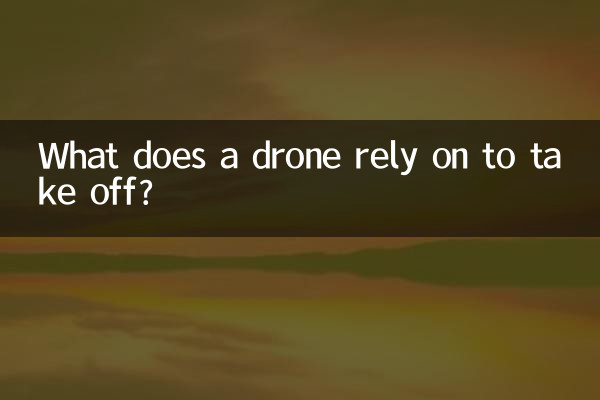What does a drone rely on to take off? Revealing its power principle and technical core
In recent years, drone technology has developed rapidly and is widely used in aerial photography, logistics, agriculture, rescue and other fields. So, what exactly does a drone rely on to take off? This article will combine the hot topics and hot content of the entire network in the past 10 days, and conduct a structured analysis from three aspects: power principles, technology classification, and market trends.
The takeoff of a drone mainly relies on the following power systems:

| Power type | Working principle | Applicable scenarios |
|---|---|---|
| Multi-rotor power | Multiple motors drive propellers to rotate to generate lift | Consumer drones, aerial photography |
| fixed wing powered | Relying on the aerodynamic lift generated by the wings, similar to traditional aircraft | Long-range reconnaissance, logistics and transportation |
| hybrid | Combining the advantages of rotor and fixed wing, switching flight modes after vertical takeoff and landing | Military and industrial grade applications |
Multi-rotor UAVs are currently the most common type, with simple structure and flexible control, but short endurance; fixed-wing UAVs are more suitable for long-distance missions, but require a runway or catapult device to take off; hybrid power is one of the future development trends.
The takeoff of a drone not only relies on the power system, but also requires the support of the following core components:
| Part name | Function | technology trends |
|---|---|---|
| battery | Provide energy and affect battery life | Solid-state battery, fast charging technology |
| flight control system | Control flight attitude and path | AI autonomous obstacle avoidance and cluster collaboration |
| Communication module | Realize remote control and data transmission | 5G, satellite link |
Recent hot spots show,battery technologyIt is a key factor restricting the development of drones. For example, CATL announced the development of high-energy-density batteries, which are expected to increase the battery life of consumer drones to more than one hour. In addition, the progress of AI flight control systems has also attracted much attention. DJI’s latest"Smart Follow 6.0"Technology enables precise tracking in complex environments.
According to the analysis of the entire network data in the past 10 days, hot topics in the field of drones are concentrated in the following directions:
| Application areas | Typical cases | Market size (forecast to 2023) |
|---|---|---|
| Logistics and distribution | Amazon Prime Air trial operation | $12 billion |
| Agricultural plant protection | XAG Intelligent Spraying System | $4.5 billion |
| emergency disaster relief | Material delivery during Türkiye earthquake | $2.8 billion |
The logistics field has become the most popular recently.WalmartAnnounced the expansion of the scope of drone delivery to cover 6 states in the United States; in terms of agriculture, China’s Ministry of Agriculture and Rural Affairs promotes drone subsidy policies to accelerate the implementation of smart agriculture. In addition, the tactical application of drones on the Ukrainian battlefield has also triggered widespread discussion.
The takeoff of UAVs relies on the co-evolution of power systems and core technologies. future, withhydrogen fuel cell,bionic designAs the technology matures, drones will break through existing limitations and play a role in more fields. For example, NASA is testing Mars drones to expand the possibilities of extraterrestrial exploration.
It can be seen from recent hot spots that drones are not only technological products, but also a driving force for social change. Whether it is solutions for the last mile of logistics or rapid response in disaster relief, its potential is being continuously tapped.

check the details

check the details